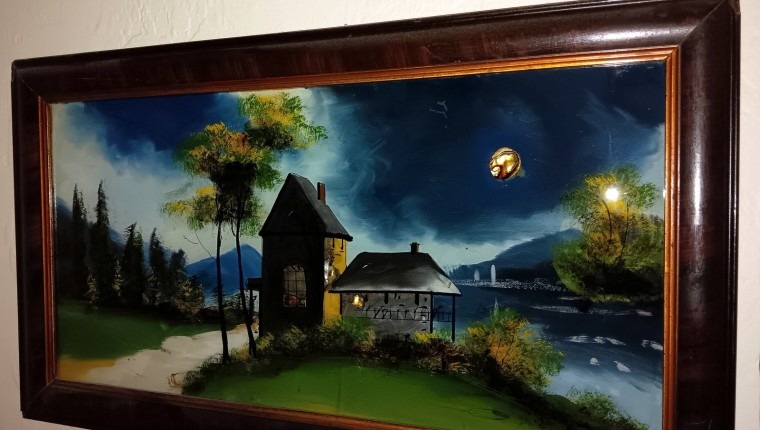Reverse painting on glass is a complicated process, whereby the artist must think in reverse order, painting from the foreground to the background by applying paint and then viewing the image by turning the glass over and looking through the glass at the image painted. It is a complicated process.
Reverse painting on glass is an art form that’s been around for many years, as old as the Renaissance, flourishing between 1550 and 1850 and becoming widespread and incredibly popular thanks to the attractive bright colors and the shimmer and depth of the glass.
In medieval Europe, the master craftsmen in Murano, Italy originated the technique and used glass s their canvas to create exquisite religious artworks for the wealthy.
The technique spread to Asia via trade routes and was introduced to Japan as an import from China during the Edo Period (1603-1868). In Germany during the late 17th century reverse painting on glass was known as “Hinterglasmalerei” and was popular with the “Blue Rider” artist’s group along the Rhine.
In America, reverse painting enjoyed its greatest popularity during the Federalist Period of 1800s. It was primarily practiced by old-country artisans in the original colonial cities. Reverse paintings were used to decorate clocks, mirrors and other items of the time. This art fashion reigned from about 1815 to 1850 and again flourished in the early 1900s. Although records are currently hard to find about the artists who created them, many paintings still exist. Most scenes usually depict houses and other structures often times, using mother-of-pearl for windows and moons along with wonderfully green trees and shrubbery. Truly beautiful.
Unfortunately, from 1915 -1945, this technique fell nearly to a complete oblivion and its methods of paint composition and structural layout have yet to be completely re-invented.



